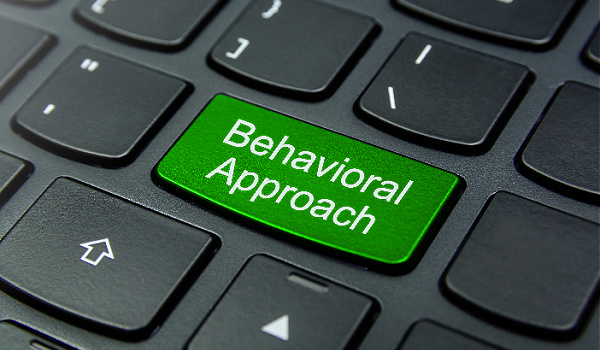There has to be a better way of going about behavioral investing, right?
To date, behavioral finance has enhanced the financial planning process by working to address people’s behavioral and emotional needs around money, acknowledging that emotional decision making is the genesis of many financial errors. Companies in the wealth management industry have recognized the need, and in response, hired their own behavioral experts.
But attempts to link the principles of behavioral finance to an investment portfolio have thus far been clunky—that’s why Cullen Roche, Founder and Chief Investment Officer of Discipline Funds, is proposing a new behavioral investing framework that links the bucketing technique to goals-based investing.
“To me investing is inherently psychological,” said Roche on Debunking Common Investment Myths, a recent episode of the Standard Deviation podcast hosted by Daniel Crosby, Chief Behavioral Officer at Orion Advisor Services. “It’s really a battle with ourselves in so many ways, and I think one of the interesting things I’ve discovered is that it’s not just a battle with our own emotions, it’s a battle to understand them, and that’s one of the most challenging aspects of investing.”
The traditional approach involves a measure of a person’s risk tolerance, where their feelings about risk are quantified and a risk-targeted portfolio is designed for them using several asset classes, which then may or may not be adjusted over time as their relationship with investment risk changes. But risk tolerance has nothing substantial tying it to the needs of investors: if someone panics, what good does it do them to know that their risk tolerance score was an 8.9 on your advisory firm’s risk technology?
Real people struggle to navigate all the different time horizons they’re faced with, said Roche, and as a result short-term liabilities like credit card bills and mortgage payments end up competing with mid-term liabilities like a new home purchase and longer-term liabilities like college tuition planning or retirement.
It’s About Time
These are all temporal problems attached to liabilities that investors and financial planners want to be able to achieve with some degree of certainty, said Roche.
“I think one of the useful frameworks I’ve come across is trying to match certain assets with certain liabilities,” said Roche. “So, for instance, everybody probably holds some cash in their bank account to be able to meet their weekly or monthly liabilities, whatever that might be, and cash of course is the perfect short-term nominal protective instrument because you know that a dollar is going to be a dollar in a month—but the further you go out across all these different time horizons, the more and more challenging this gets.”
This is particularly difficult for planners and investors alike because a lot of investments are not attached to specific time horizons, said Roche. While Treasury bonds—in Two-year, Five-year, 10-year and 30-year varieties—are straight forward, other asset classes, like the stock market, don’t have a clear time horizon.
So, Roche has set out to create a time horizon for any asset class, and thus, any investment product. This involved creating a model to calculate the durations for each asset class so that an investor or advisor could plug any strategy into the model and have a duration spit out.
“So, for instance, using this model, I basically came to the conclusion that the duration of the stock market is about 17 years,” said Roche. “The goal of that is to help somebody put the stock market in the proper temporal perspective where they can look at the stock market and say ‘okay, the stock market hasn’t done well over the last 17 days, or the last 17 months, but I know that component, that allocation of my portfolio is not designed for that time horizon.’”
Behavioral Impact
Roche claims the framework pulls people out of short-termism where people struggle to understand what’s happening in the markets day-to-day because they have no certainty around
“It doesn’t have to be 17 years, you know, but the stock market is inherently a longer-term time horizon type of instrument,” Roche. “It gets you away from this behavioral bias of short-termism, where people are struggling to understand what’s happening in the short-term because they really don’t have certainty around the time horizons of their financial assets.”
The framework takes the investment allocation approach of bucketing and applies it to time horizons developed in goals-based investing. While classic bucketing usually involves three buckets—short-, medium- and long-term buckets—Roche’s concept involves as many buckets as a person has goals or liabilities.
Roche says that the framework can be used to account for 10-time horizons or 100-time horizons, targeting investment allocations that offer a certain probability of success for each goal.
Then, like traditional bucketing, risk-appropriate investments are used within each bucket. So, someone with an allocation intended to cover current credit card or mortgage payments may have one bucket with cash and short-term investments like Treasury bills, and then another bucket with medium-term investments like 2-Year and 5-Year bonds for the future down-payment on a new house, and then a very long-term bucket for things like tuition and retirement involving riskier assets like stocks.
Roche says there are behavioral advantages to linking investments to specific needs and time horizons.
“If they put things in proper temporal perspective, you can look at this and say okay, my 60/40 portfolio isn’t doing great this year,” said Roche. “The interesting thing with a 60/40 portfolio is that when you blend those allocations into one index fund or strategy, you crunch down the duration because you’re blending stocks with the bonds—this is one of the big benefits of diversification—you reduce your duration by creating greater certainty across certain time horizons, so a 60/40 portfolio has an eight-year duration in my model, compared to a 100% stock model where you have 17 years. You can fit that eight-year bucket into a time horizon that is much more behaviorally powerful.”
So in a period like the first eight months of 2022, where the stock market and bond market have mostly been negative, even the most disciplined advisors and investors have to cope with the creeping feeling that “it’s different this time,” said Roche, but using his framework the investor is more likely to recognize to recognize that this is another tough period in the markets like 2008 or March 2020, but their immediate needs are covered and their mid-term needs are in lower risk assets.
What Does Risk Really Mean?
Advisors need better investing tools to deal with client behaviors, said Roche, who levied a critique of risk-tolerance questionnaires that are used to guide asset allocation in most modern investment portfolios.
“You send this thing out to somebody and ask what they do when the market is down 30%, and of course most people say that they buy more while it’s down, or that they sit tight, but in the throes of this, everybody feels like it’s different this time,” he said. “If the market is down 30% it will go down another 30%, they need to react differently.”
Instead of using risk tolerance questionnaires to create portfolios targeting an abstract expression of risk, Roche proposes that the wealth management industry blunt the behavioral impact of market volatility by embracing goals-based investing.
Short-term market movements are less important when every dollar is given a time horizon, said Roche with cash and the lowest-risk investments acting as a temporal buffer.
“Even though they are not sexy instruments, or high-return types of instruments like bitcoin over the past 15 years or the stock market, they provide you with a behavioral hedge where you have a lot of certainty in your portfolio across these really uncertain short-period time horizons,” he said. “The nominal stability of investments is there.”








